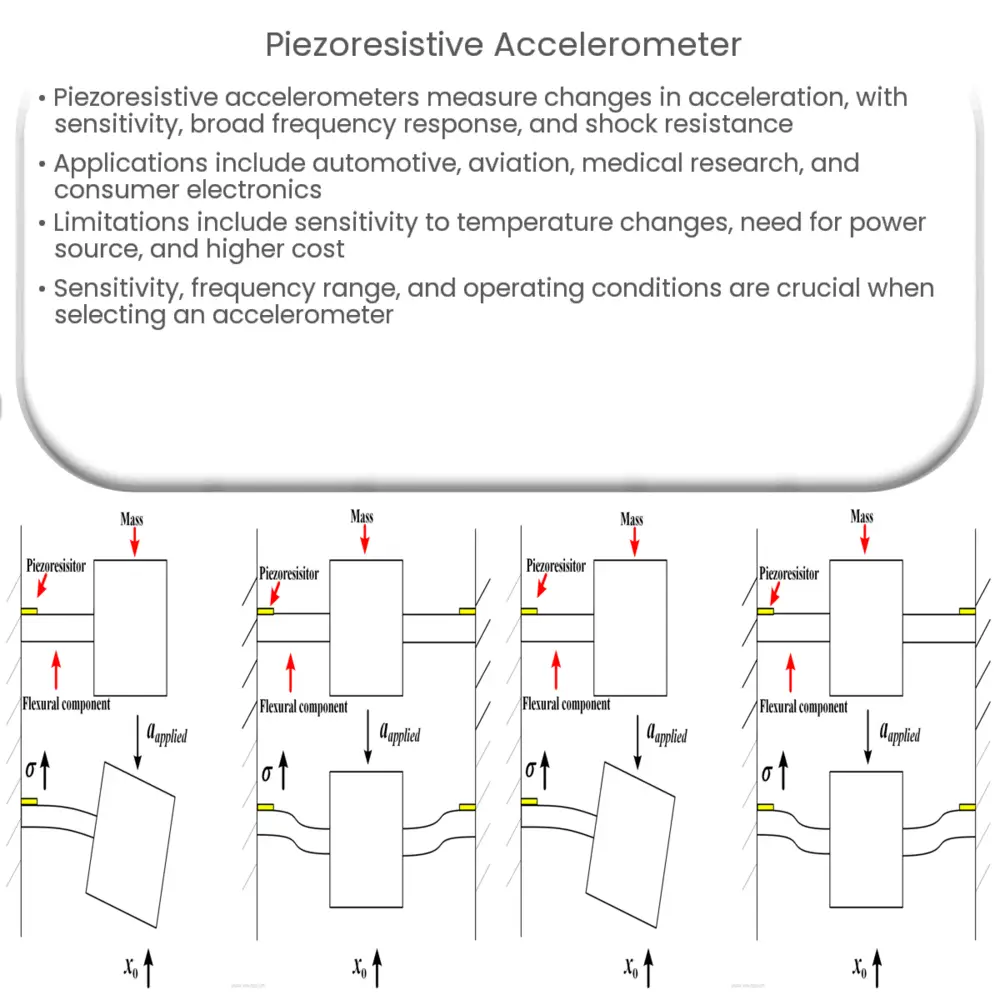Piezoresistive accelerometers play a critical role in a variety of applications, from aviation and automotive engineering to healthcare.

Introduction to Piezoresistive Accelerometers
Piezoresistive accelerometers play a critical role in a variety of applications, from aviation and automotive engineering to healthcare. These devices measure changes in acceleration by translating them into electrical signals.
Understanding Piezoresistive Accelerometers
Piezoresistive accelerometers function based on the piezoresistive effect. The term “piezoresistive” combines ‘piezo,’ which comes from the Greek word for ‘press’ or ‘squeeze,’ and ‘resistive,’ which refers to resistance. Thus, piezoresistive accelerometers sense changes in resistance caused by mechanical strain.
- They are composed of piezoresistive material, often a semiconductor such as silicon, whose resistance changes under strain.
- These changes in resistance are then translated into electrical signals proportional to the acceleration.
The Mechanics of Piezoresistive Accelerometers
Piezoresistive accelerometers usually contain a mass attached to a cantilever beam. When the accelerometer experiences acceleration, the mass applies force to the beam, causing it to bend. The piezoresistive material on the beam changes its resistance in response to this strain.
Advantages of Piezoresistive Accelerometers
Piezoresistive accelerometers have several benefits that make them a preferred choice in many applications. These include:
- High Sensitivity: These accelerometers can detect even small changes in acceleration, making them ideal for precision measurements.
- Wide Frequency Response: They can measure a broad range of frequencies, suitable for many different applications.
- Shock Resistance: These devices are highly resistant to shock and vibration, contributing to their durability and reliability.
Applications of Piezoresistive Accelerometers
Piezoresistive accelerometers are used in a myriad of fields for their accuracy and versatility. These areas include but are not limited to, automotive testing, vibration studies, aircraft testing, medical research, and consumer electronics.
Further Exploration into Applications
Let’s delve a bit deeper into some specific applications of piezoresistive accelerometers:
- Automotive Testing: In vehicles, these devices can monitor and measure crash impacts, engine vibration, suspension performance, and braking efficiency.
- Aircraft Testing: In aviation, accelerometers are used to measure pilot and passenger comfort levels, monitor vibration in the aircraft structure, and provide critical data for flight tests.
- Medical Research: Piezoresistive accelerometers can be used in various medical applications, including monitoring patient movement, studying biomechanics, and developing fitness equipment.
- Consumer Electronics: These devices are commonly found in smartphones, game controllers, and wearable devices, where they detect orientation changes and motion.
Challenges and Considerations
Despite their advantages, piezoresistive accelerometers also have certain limitations:
- They require a power source to function and are sensitive to temperature changes, which can affect their accuracy.
- Piezoresistive accelerometers also exhibit non-linearity and hysteresis, requiring calibration and compensation methods for precise measurements.
- Their cost is generally higher compared to other types of accelerometers, like capacitive or piezoelectric accelerometers.
Selecting the Right Piezoresistive Accelerometer
When choosing a piezoresistive accelerometer, several factors need to be considered:
- Sensitivity: Choose an accelerometer with the right sensitivity for your application. High sensitivity is beneficial for detecting small accelerations, but it may limit the maximum range of measurement.
- Frequency Range: The accelerometer should have a suitable frequency range for the vibrations you wish to measure.
- Environment: The operating conditions, such as temperature range and presence of electromagnetic fields, should be taken into account.
Conclusion
In conclusion, piezoresistive accelerometers are an essential tool in various fields, thanks to their high sensitivity, broad frequency response, and shock resistance. They help measure and monitor acceleration in vehicles, aircraft, medical equipment, and consumer electronics. Understanding their advantages, limitations, and the factors to consider when choosing an accelerometer can help you select the most suitable device for your application.4

